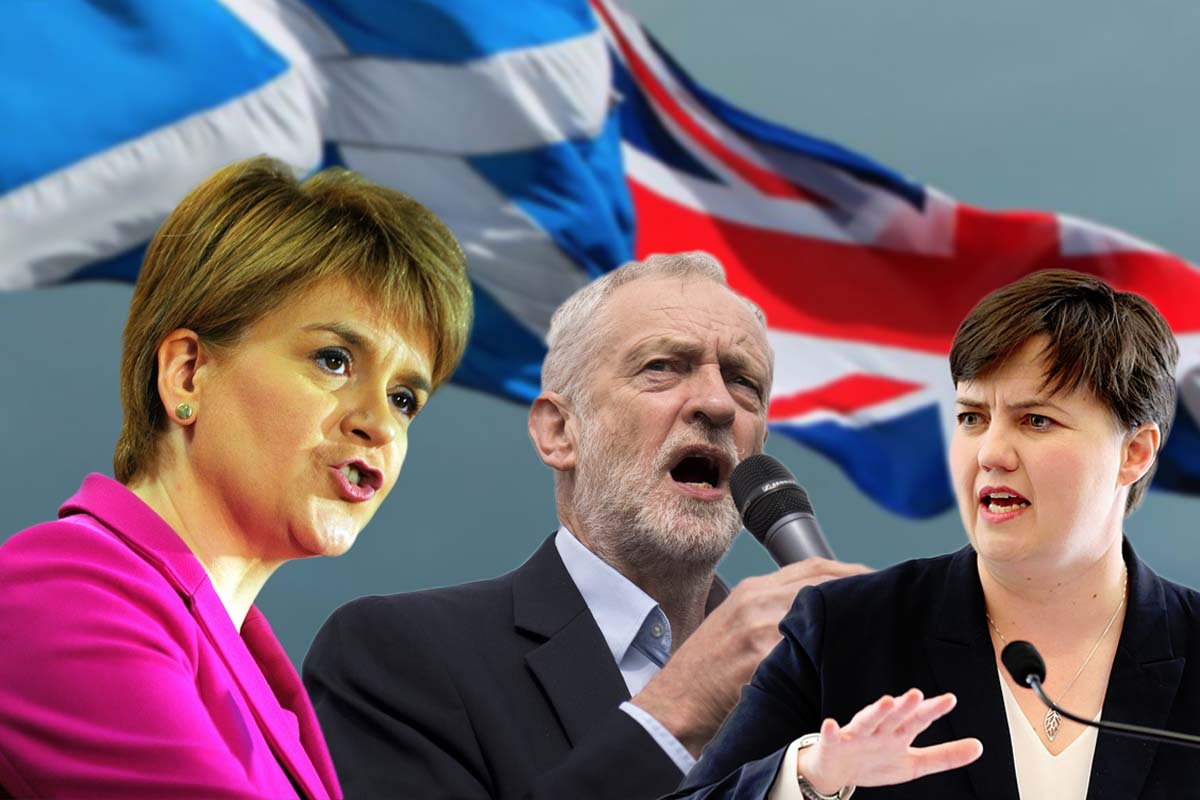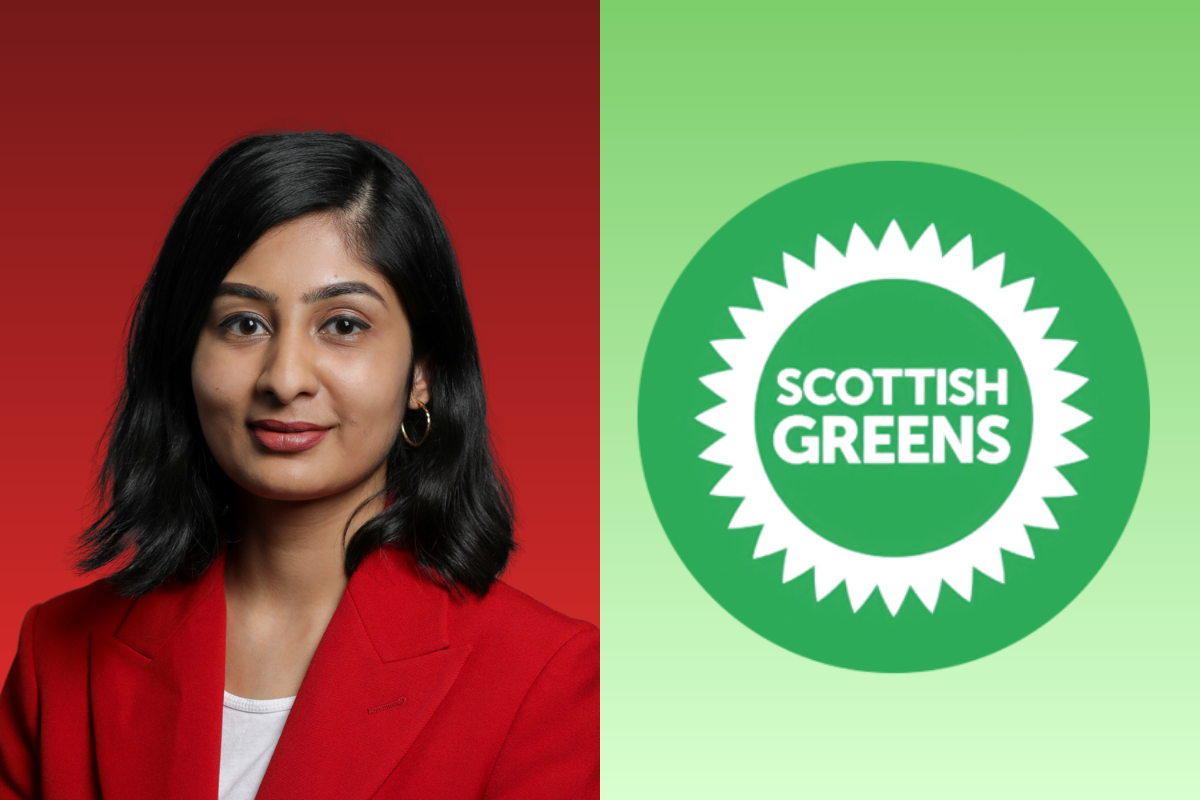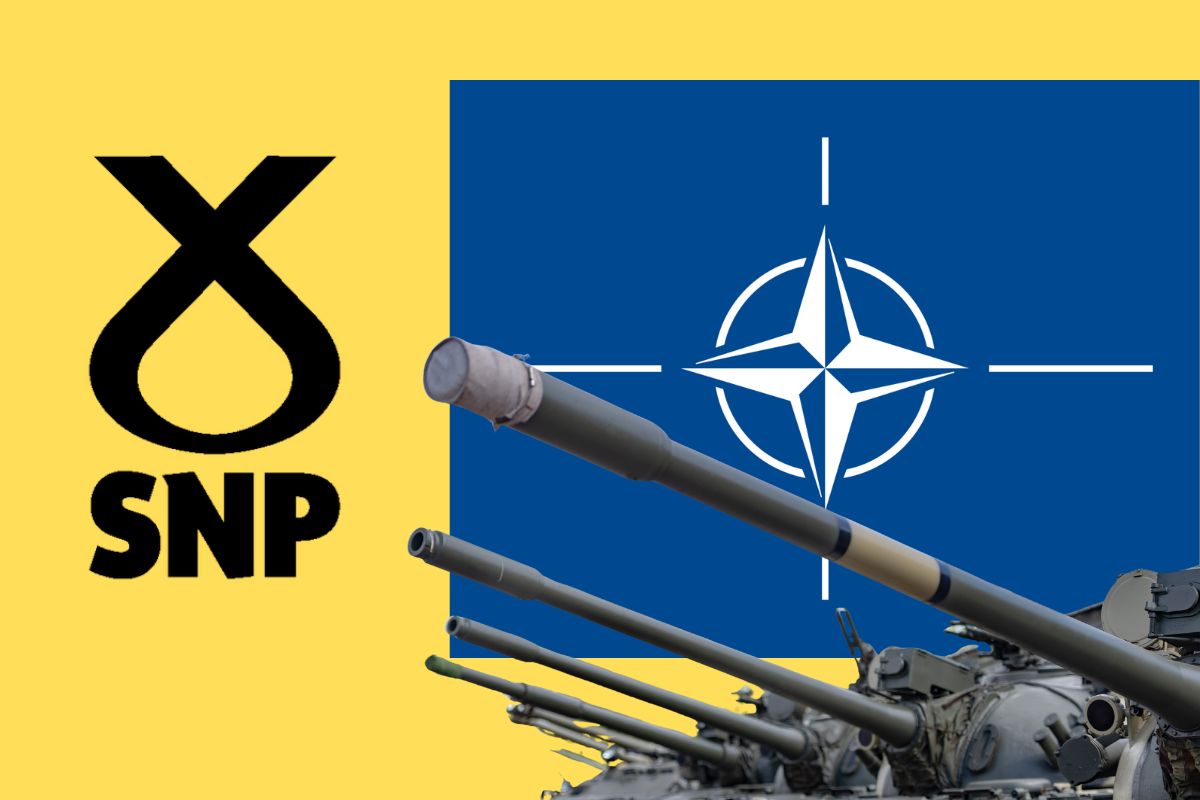On the back of last week’s election, the SNP still dominate in Scotland, but have taken a major kicking. Key figures such as Alex Salmond have lost their seats. The unionist vote has consolidated around the Tories, whilst Corbyn’s Labour have won over some left-wing workers and youth. The political landscape continues to be transformed.
The Tory Party has been humiliated. They’ve gone from having an overall majority to having to lean on the DUP to stay in power. Corbyn is the hero of the hour, having led a campaign that inspired millions to vote and galvanised tens of thousands into political activity.
In Scotland there is a somewhat different picture to the rest of the UK after yet another dramatic election night. Against the trend elsewhere of Tories losing seats, they have gained 12 north of the border, leaving them with 13 Scottish MPs, the best performance of the Tories in Scotland since 1983.
The SNP still dominate but have taken a major kicking. Key figures such as Alex Salmond and Angus Robertson have lost their seats. The party lost all their Borders seats and much of the Highlands to the Tories. In the Central Belt they’ve also lost six seats to Labour, who now have seven. They’ve even lost two seats to the Lib Dems.
Whilst SNP leaders may say that nobody ever expected a repeat of the historic 2015 election – where they won 56 out of 59 Scottish seats and 50% of the vote – this is a crushing blow. In total they have lost 21 seats (over one third) and their share of the vote has dropped to 37%.
Although it happened more dramatically than many predicted, the loss of seats in traditional SNP areas is not a big surprise. Areas such as Aberdeenshire and Moray, who heavily voted No in the 2014 independence referendum, have strengthened their Tory base. The “Tartan Tory” elements of the SNP, meanwhile, have been significantly undermined by the mass influx of left-leaning new members and supporters over the last three years. The party has become much more one of the Central Belt than of the rural areas.
The Scottish Tories have also come back from the wilderness under the leadership of Ruth Davidson. They have very successfully positioned themselves as the defenders of the union and only real opposition to the SNP. In doing so they have won votes from the Tartan Tory (former) base of the SNP and also more right-wing, unionist elements of the Labour vote.
Labour gains
The latest election results indicate that the honeymoon period for the SNP is over. Their huge success in 2015, on the back of the IndyRef campaign, has led them to develop an attitude of complacency. The 2016 Holyrood elections saw a depoliticisation of their campaign, focusing more around party loyalty and Sturgeon’s personality than progressive policies that could engage the membership. Although this general election campaign saw a bit of an improvement, it still wasn’t enough for many.
There was a sense that the SNP wanted to move away from the left, working-class base they had gained in the 2014 referendum towards something more “centre ground”. Their conference featured big corporate sponsors such as Charlotte Street Partners. Rhetoric focused around being “stronger for Scotland” implied there is one unified Scottish interest. Also, despite opposition to austerity from Westminster, there have been cuts at the local level and very little use has been made of devolved tax powers. Pointing the finger at the Tories in Westminster has started to sound a little hollow, and their left base has become more impatient with a lack of action. Angus Robertson, the former SNP Westminster leader who lost his seat to the Tories, even went so far as to say that “ideology” was not the way to win independence.
Due to the SNP’s centrism and lack of action, the turnout in Scotland fell from 71% in 2015 to 66% this time around, below the 69% for the UK as a whole. This suggests that working class voters who were motivated to come out for the SNP in 2015 may have chosen to stay home this time around. The failure to mobilise the vote has had a huge impact on party fortunes, as majorities across many constituencies were very thin: the SNP won North East Fife by just two votes! If those voters who turned out at 2015 but not in 2017 had voted SNP this time around, the SNP would have retained 48 seats, whilst the Tories would have won 7, the Lib Dems 3 and Labour 1. Of course there is no guarantee these voters would have voted SNP, however, this stresses the importance of turnout.
Whilst the Tories seemed to be the main beneficiaries, the Labour Party has been able to win back some support from the SNP. Their share of the vote grew by 3 percentage points to 27%, just behind the Tories on 29%. In part, Scottish Labour’s efforts to make itself as unionist as possible will have helped win over some anti-independence votes. But it is likely they also lost some unionist votes to the Tories, whilst simultaneously winning votes on the left, including many YES voters.
An important factor, therefore, is the leftward shift in the national Labour Party, which has inspired many workers and youth, including many who back independence.
The SNP’s failures have played a role in this process. But it is clear that, above all, the mass movement seen south of the border has also spilt over into Scotland. The effect of Corbyn’s campaign is evident in the improvement Labour made in the general election compared to the council elections last month, prior to Corbyn’s campaign really taking off, where Labour lost 133 councillors. However Scottish Labour leader Kezia Dugdale, who has been one of many Corbyn critics and who supported efforts to oust him last year, has been fairly quiet on the Corbyn effect and keen to emphasise her party’s success as being based on opposition to the SNP and independence.
What next?
Following last week’s results, questions will be asked from members and supporters about the party’s political positions, tactics and internal organisation. The SNP showed a big disparity in their campaigning. For example, in Edinburgh East, Tommy Sheppard’s campaign mobilised activists every night to campaign for him. Along with Mhairi Black, he made left-wing appeals about backing Corbyn. Campaigns in other constituencies, by comparison, were far less organised and inspiring.
The loss of seats, particularly to Labour on the left, gives more weight to the ideas that Tommy Sheppard put forward in his deputy leadership campaign. And with established figures such as Angus Robertson and Alex Salmond gone, it opens up the question of who will be the parliamentary group leader. Pete Wishart is a likely candidate, but more openly left-wing figures such as Mhairi Black and Tommy Sheppard may well become more dominant.
The SNP still dominate Scottish politics and will continue to have a very advantageous position – but this won’t last forever without serious changes. The choice for them is go left or go under, and the leadership don’t have long to make that choice. There are forces which could push the party to the left, but this is far from certain. If the SNP continue along their current path, then this could open up space for Labour.
This, in turn, would be dependent on whether Corbyn’s success continues to grow. This election has given Corbyn and his programme a huge boost, winning him more allies within the party. The Labour civil war is far from over though. If the new Scottish Labour MPs back Corbyn against his enemies within and outside the party then it would help win some trust back among the Scottish working classes.
Instability ahead
A new Tory minority government will be very unstable. Ruth Davidson, who now holds significant clout in the party having led one of few areas of success, has already voiced her uneasiness over the DUP’s opposition to LGBT+ rights. There was even talk of Davidson setting up a separate Scottish party but she has since quashed these claims. Divisions over issues such as the EU have never been resolved and are likely to open up again. A new general election in the near future is very possible, and this could well see Corbyn coming to power on the back of a mass grassroots movement, further transforming the political landscape in Scotland.
The question of a second independence referendum will be on the back burner for now. The unionist parties will use the SNP’s losses to pour cold water on the idea of another referendum, and their arguments will carry a certain amount of weight. SNP leader, Nicola Sturgeon, has already stated that IndyRef2 contributed to SNP losses and has implied that she will be shelving the idea for now. Meanwhile, if the Corbyn-led Labour Party continues to inspire and mobilise millions of workers and youth, winning a new election and forming a left-wing Westminster government, this could further eat into the desire for Scottish independence.
This isn’t a given either though. A Tory government, particularly with the extremely reactionary unionist DUP behind them, may well make the question of independence very popular again for progressive reasons.
Some have argued that the gains for the Tories in Scotland means there has been a turn to the right north of the border. But this disregards the lower turnout and the fact that the left vote was split between the SNP and Labour. It should also be noted that whilst the Tory percentage of the vote grew by 14 percentage points to 29%, this is still far behind the 42% in the UK as a whole.
The issues which inspired millions of people to campaign for Corbyn are the same as those that inspired the 2014 Yes campaign. The ensuing political shift in Scotland, with workers and youth looking for an anti-establishment alternative, has not been resolved. It’s only a matter of time before the working classes move back into action in Scotland. The task of socialists remains to build a revolutionary organisation to lead the masses to victory.






